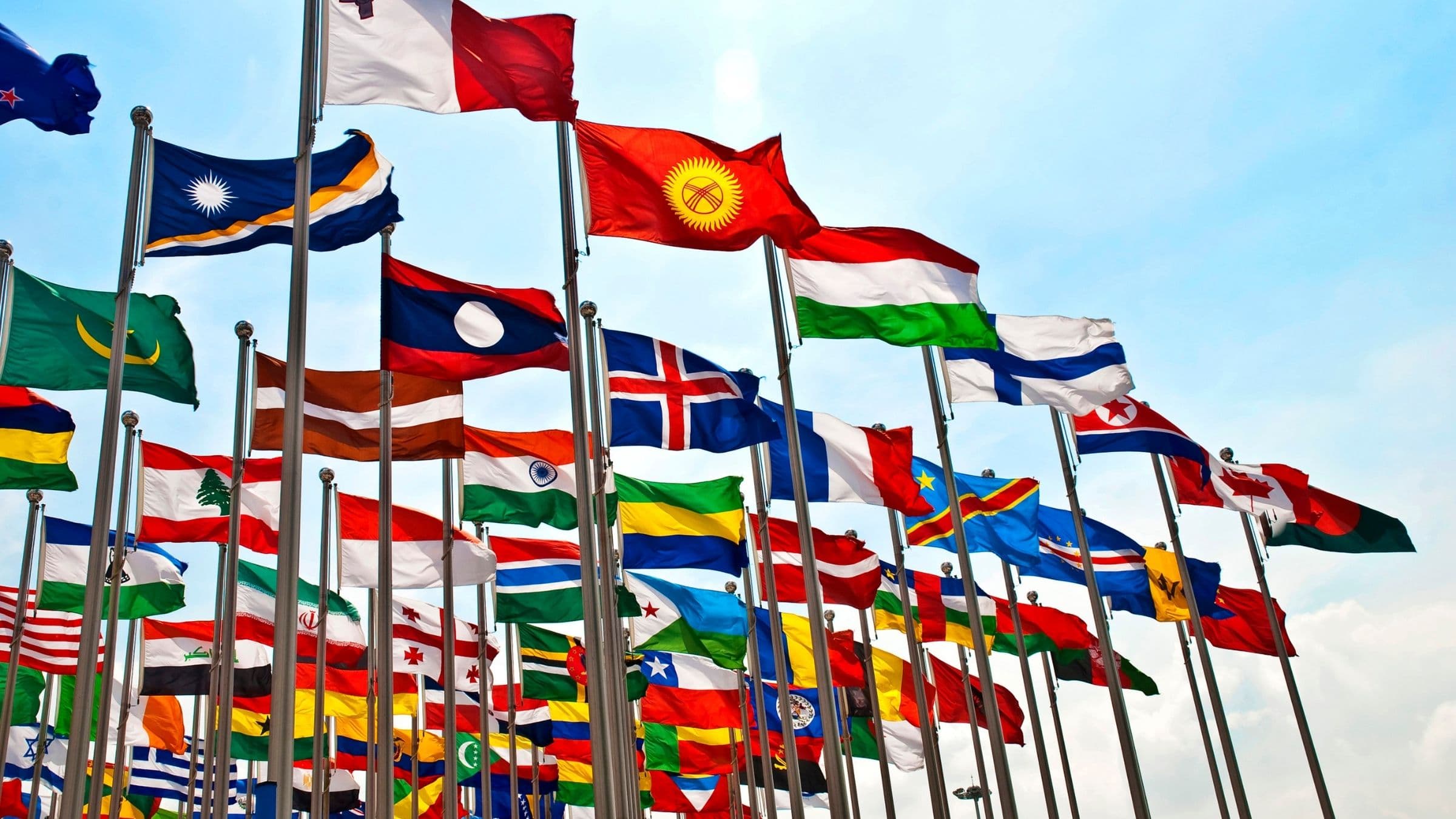
COUNTRY PROFILE
Discover more about the Mexico market including overviews about the retail, food service, and food processing sectors. Events, resources, and more are linked throughout the profile.

2nd
largest importer of U.S processed foods

$8.8 Billion
total of U.S. processed foods imports in 2023

6% Increase
a record high of U.S. imports in 2023
Euromonitor International, a market research provider, reports that Mexico’s gross domestic product (GDP) is expected to slow from 3% in 2023 to 2.1% in 2024, primarily due to the increasingly restrictive impact of the record-high interest rate of 11.25% set by Banxico, the country’s central bank. With year-on-year inflation reaccelerating to 4.7% in December 2023, following 4.3% in November 2023, significant rate cuts are unlikely in the first quarter of 2024.
However, the Mexican economy will still benefit from significant growth momentum in 2023 and additional growth impulses in early 2024. These include strengthened private consumption resulting from a considerable rise in the minimum wage, taking effect in January 2024. Moreover, additional fiscal measures, private sector investment and growing foreign investment support growth. Risks to the outlook stem especially from the implications of an economic slowdown in the U.S. and potential disruptions within the context of the presidential elections in Mexico scheduled for June 2024.
Mexico’s population has been growing at a steady pace. In 2023, it totaled 129.8 million, (CIA World Factbook Est.), up from 101 million in 2000. Population growth, however, is decelerating over time. Meanwhile, Mexican society – although still young – is undergoing an ageing process. The median age stood at 30.6 years in 2021, 7.3 years greater than the figure for 2000. The number of those over 65 years jumped from 5.2 million in 2000 to 10.3 million in 2023 and should reach 13.9 million by 2030.
Since joining the North American Free Trade Agreement (NAFTA) in 1994, Mexico has negotiated more trade agreements (50) than any other country. Mexico is a member of the new 11-member Comprehensive and Progressive Agreement for Trans-Pacific Partnership (CPTPP), which was formally created in March 2018. NAFTA was updated to the U.S.-Mexico-Canada agreement (USMCA) in July 2020, with a review in six years. The new deal guarantees tariff-free regional trade between the countries. However, it is feared the updated deal could shift some automobile production from Mexico to the U.S.
USDA’s Foreign Agricultural Service (FAS) Agricultural Trade Office (ATO) in Mexico City, hereinafter referred to as FAS Post Mexico City, reports that according to a 2022 study by Ernst & Young on consumption trends in Mexico, higher food prices have made Mexican consumers increasingly price sensitive, which drove demand for bulk products and/or low-cost brands down.
However, in addition to food inflation, another economic factor impacting Mexico’s purchasing power is the strong performance of the Mexican peso against the U.S. dollar. The strong peso has had positive and negative effects on the economy. On one hand, it provides more purchasing power to Mexican buyers, enabling them to buy more imported products. Conversely, the strong peso can reduce Mexican exports to the United States and to the region, negatively affecting remittances to Mexican families who rely on assistance from family members living abroad, and continued food price inflation in Mexico. Although forecasts suggest the “super peso” will continue, the impact on Mexico’s economy in the near future remains unclear.
Mexico imports a considerable amount of U.S. processed foods ranking second overall after Canada. In 2023 it added up to US$8.8 billion, and another record high with an increase of 6%.
The top processed food exports to Mexico in 2023 included:
Recommended Videos

$96.1 Billion
estimated total of retail sales of packaged food products in 2023

48.6%
increase in retail sales since 2019

$133.8 Billion
estimated in sales of packaged food products by 2028
According to Euromonitor, the packaged food market in Mexico was estimated to reach US$96.1 billion in 2023, which makes it the 11th largest packaged food market in the world. That represents a growth rate of 48.6% or US$31.4 billion since 2019. The forecast for growth in this market is also promising. By the year 2028, the retail sales in the packaged food market in Mexico is expected to reach US$133.8 billion, a growth rate of 28.9%, or US$30 billion. High growth products in the forecast include:
FAS Post Mexico City reports that according to the Mexican Association of Nationwide Retailers (ANTAD, 2022), there are 31 supermarket chains with 3,333 stores. Additionally, there are 2,524 department stores (apparel, furniture) and 41,501 specialized stores (pharmacies, hardware) that carry food products throughout Mexico. More than 57% of the retail market is covered by traditional trade (mom & pop stores, public and open-air markets), which usually only distribute local products. ANTAD also reported that retail sales in supermarkets grew steadily by approximately 8.6% per year (2021).
In 2022, supermarkets benefited from the return to physical stores, as pandemic-related public health restrictions were lifted. Supermarkets adopted an omnichannel structure by having physical stores, online stores, and partnering with delivery apps. According to the National Survey of Income and House Spending (ENIGH), which is conducted every other year, in 2020 Mexicans spent MXP$11,380 (US$620) quarterly in food and beverages. The 2020 survey showed that the most consumed foods at home are meats, cereals, vegetables, food preparations, and dairy. The return to normal also helped convenience stores close to workplaces and schools. During the pandemic, convenience stores were negatively affected as schools and non-essential jobs shifted to remote operations.
ANTAD classifies the various types of retail outlets according to their size, product lines, and additional services they offer:
Megamarkets: Surface area of 10,000 m² and sell all lines of merchandise such as groceries, non-food items, perishable products, clothing, furniture, personal care, computer equipment, etc. They also offer additional services such as pharmacy, restaurants, and banking services, among others. Megamarkets in Mexico are Mega (Soriana), Selecto (Chedraui), and City Market (La Comer).
Hypermarkets: Surface area between 4,500 and 10,000 m²; hypermarkets handle almost all the merchandise lines mentioned above and provide some services. Walmart Supercenter and HEB are examples of hypermarkets in Mexico.
Supermarkets: Surface area of 500 to 4,500 m², the products at these stores are mainly groceries and perishables such as fruit, vegetables, and frozen foods. Generally, they offer pharmacy services as well. There are also regional supermarkets chains with an important presence in Mexico according to its location. These include Casa Ley (Pacific), Calimax (Baja California), Super San Francisco de Asis (South Mexico), among others.
Price Clubs: Surface area is greater than 4,500 m² and sell groceries, perishables, clothing, and general merchandise (furniture, gifts, personal care products, and household appliances, among others); domestic or imported, some of the products are seasonal or single occasion purchases. The stores are not decorated. Most of the products are intended for wholesale or hospitality purposes. Some of the services include pharmacy, optical stores, and soda fountains. Price Clubs in Mexico are led by Sam’s Club, Costco, and City Club.
Discount Stores: Also known as bodegas (warehouses), their surface areas are around 2,500 m². They manage most product lines with fewer varieties. Their prices are lower due to the lack of decoration and services offered at the stores. Bodega Aurrera (Walmart) is led in sales among all supermarket categories, as they have several formats like Bodega Aurrera Express which is like a convenience store located in low-income neighborhoods and Mi Bodega located in small cities.
Convenience Stores: Surface is less than 500 m², functioning 24 hours a day. Their sales rely mainly on “on-the-go” purchases while commuting. Convenience stores offer a wide variety of services like cell phone credit, bank deposits, and food courts. Oxxo is the most widespread chain followed by 7-Eleven, Circle K, and Supercity (Soriana).
Mini Markets: Located in venues with less than 250 m² offering basic staples, frozen and refrigerated products. Some examples are Walmart Express (Walmart) and Sumesa (La Comer). In the last decade, the Mexican government and some food and beverage companies have offered support to Mini Markets to enhance their venues, training on best practices and incorporation to the electronic payment system.
Competition in this sector comes from other major exporters to Mexico including Canada, Ireland, Brazil, Chile, and China. Since joining NAFTA, Mexico has negotiated trade agreements with more than 45 additional countries. The latest agreements include the new 11-member Comprehensive and Progressive Agreement for Trans-Pacific Partnership (CPTPP), formally created in March 2018. The agreement entered into force in Canada, Australia, Japan, Mexico, New Zealand, and Singapore on December 30, 2018.
FAS Post Mexico City reports that current U.S. export sales trends indicate that intermediate- and consumer-oriented products will drive future growth. Niches of opportunity continue to appear as Mexico’s domestic processing sector diversifies and consumers shift to demand healthy, convenient, and high-quality foods, as indicated by recent consumer habits during the COVID-19 pandemic. Based on Post assessments, the U.S. food and agricultural products with the highest sales potential are:

675,000
establishments registered under the food and beverage preparation category

8.5%
tourism accounted for 8.5% of GDP in 2022

$26.3 Billion
economic revenue from tourism in 2022
FAS Post Mexico City reports that as 2022 marked a return to normality after the COVID-19 pandemic, the Mexican foodservice industry began its recovery and, in many respects, exceeded pre-COVID-19 levels of activity in hospitality and foodservice. Initially hampered by travel restrictions, limitations on gatherings and a hesitant population, many hotels and restaurants still strove to maintain a level of operations through the pandemic.
Thankfully, both Mexican consumers and foreign tourists, anxious to “finally get out,” responded in the form of record vacation purchases and flight bookings, translating into record occupancy levels. As the dust settles from the initial euphoria, the Mexican foodservice industry faces the near future with more adaptability, creating additional opportunities for U.S. food and agricultural products.
The Mexican Secretariat of Tourism (SECTUR) estimated that tourism accounted for 8.5% of gross domestic product (GDP) in 2022, as Mexico continued to benefit from the high demand from both domestic and foreign tourists. SECTUR reported 38.3 million international tourists in 2022, up 20% from 2021, but still 15% below pre-pandemic numbers. The economic revenue was US$26.3 billion, 43% higher than 2021 and 18% above pre-pandemic levels. According to SECTUR, the average expenditure was US$687 per tourist, with an average stay of 7.5 days.
According to INEGI, in 2021 Mexico had 25,200 hotels and 867,328 hotel rooms. The main leisure tourism destinations are the Cancun-Riviera Maya corridor, followed by Mexico City, Puerto Vallarta, and Riviera Nayarit. In terms of business tourism, which grew 7% in 2022, Mexico City, Guadalajara and Monterrey are the top destinations. Mexico ranks seventh in the world in terms of hotel supply. According to SECTUR, the Mexican hotel industry accounts for 28.7% of tourism GDP and generates 9% of tourism jobs, with each room generating 1.5 direct and three indirect jobs.
According to INEGI, there are almost 675,000 establishments registered under the food and beverage preparation category. This includes different categories like cafes and bars, full-service restaurants, quick service restaurants (fast food), cloud (or dark) kitchens, and catering services. Fast food restaurants are considered the most affordable within the sector and are preferred by Mexican consumers (particularly families) when dining out. This segment has reacted to consumer habit changes by including plant-based products in their menus.
FAS Post Mexico City reports that many foodservice trends in Mexico correspond with global trends. Middle and upper-class Mexican consumers follow new trends in dieting, traceability/sustainability, and ingredient information, thus becoming more knowledgeable and selective. As a response to increased competition, hotels and restaurants across the price spectrum seek to provide not just a mere product or service, but a whole consumer experience. Hotels include visits or tours to agricultural production areas like distilleries, vineyards, craft beer facilities, and traditional agricultural farms, of host local farmer’s markets so guests can enjoy some of the local/regional products.
Similarly, restaurants have their own kitchen gardens or partner with local producers for fresh supplies. High-end businesses offer casual options with quality foods at affordable prices. Renowned Mexican chefs frequently collaborate with restaurant chains, cafes, bakeries, breweries and even cinemas. Niche opportunities continue to appear as Mexico’s domestic processing sector diversifies and consumers shift to demand healthy, convenient, and high-quality foods.
FAS Post Mexico City reports that current U.S. export sales trends indicate that intermediate- and consumer-oriented products will drive future growth. Niches of opportunity continue to appear as Mexico’s domestic processing sector diversifies and consumers shift to demand healthy, convenient, and high-quality foods, as indicated by recent consumer habits during the COVID-19 pandemic. Based on Post assessments, the U.S. food and agricultural products with the highest sales potential are:

$301 Million
The Food, Beverage & Tobacco Manufacturing contributed $301 million to Mexico’s GDP

2 Million
over 2 million people employed in this sector

3rd
Mexico is the third largest food processing industry in the Americas
FAS Post Mexico City reports that according to the National Institute of Geography and Statistics (INEGI), 217,477 economic units are registered under the “Food, Beverage & Tobacco Manufacturing” classification, which includes offices, manufacturing plants, and distribution centers. By the spring of 2023, over 2 million people were employed in this sector, of which 51.1% were women. In the first trimester of 2023, this sector contributed US$301 million (5.48B MXP) to Mexico’s gross domestic product (GDP).
Mexico’s food processing industry is the third largest in the Americas behind the United States and Brazil and is among the top 15 worldwide. Mexico’s gross domestic product (GDP) grew by 3.1% in 2022 and continues to recover following the COVID-19 pandemic. The slump in Mexico’s tourism sector following the outbreak of COVID-19 began to recover in 2021 and rebounded more significantly in 2022, which also drove increased demand for food processing ingredients.
Bakery and tortilla production accounted for 25% of total food processing in 2021, followed by meat and dairy processing. Food processing ingredient products with strong sales potential include vegetable proteins, non-wheat flours, extracts and functional products, plant-based foods, products with added elements such as vitamins and probiotics, and some dairy products. Mexico is a top global market for U.S. food processing ingredients.
The U.S. remains Mexico’s primary supplier of imported food processing ingredients. U.S. ingredient products enjoy a good reputation among Mexican end-users for consistent quality, stable supply, and ease of proximity. In 2023 Mexico was the top market for U.S. milk powder exports (US$1.1 billion), as Mexico imports on average 70% of its milk. Mexico is also a top market for food flavorings, odiferous substances, and essential oils. Key drivers of this growth are Mexican production of sauces, seasonings, and growing consumer demand for foods and beverages with functional ingredients. Younger consumers are willing to try new cuisines and tend to be interested in foods perceived to boost immunity, as well as vegan and vegetarian products.
While the European Union, Japan, Chile, Brazil, Uruguay, and other third countries continue to make inroads in Mexico for some food processing ingredients like poultry, dairy products, and rice, the United States maintains its commercial, geographical, and logistical advantages. For example, a U.S. exporter may be able to ship one truckload or train car for an urgent order, while such a small shipment would be economically and logistically unviable via a third-country shipper, who generally ships multiple containers or bulk ocean-freight consignments. Resolving ongoing logistical and supply chain constraints will be fundamental in the medium-term.
Based on FAS Post Mexico City assessments, some products with potential in the Mexican market are:
